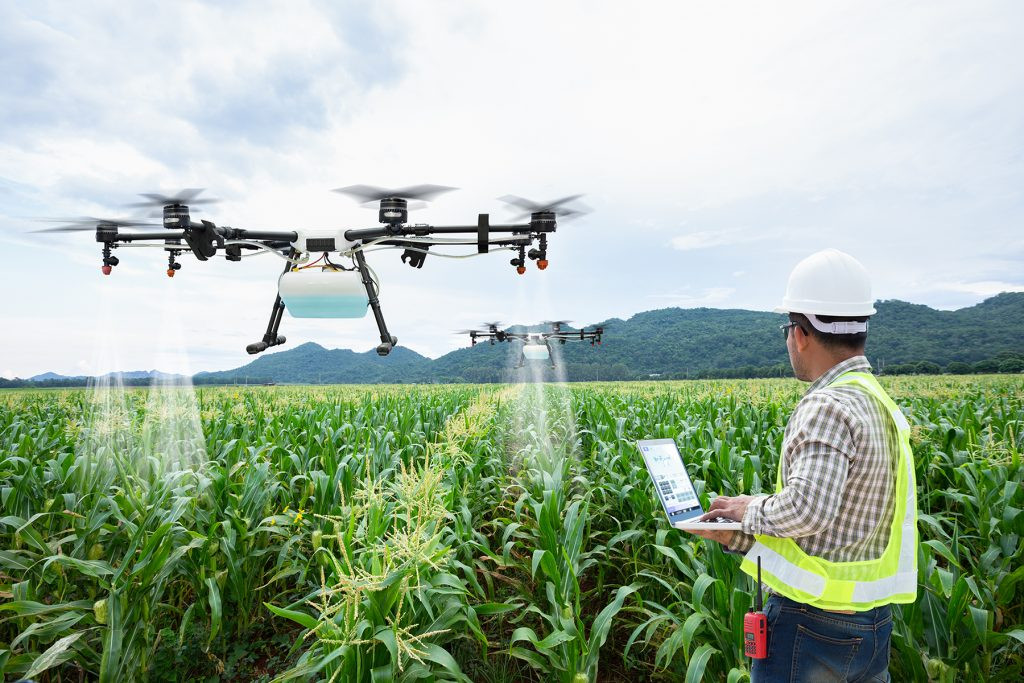As agriculture embraces the digital age, drone technology is quickly becoming a game-changer. From crop spraying to field mapping, drones are helping farms work faster, safer, and smarter. But behind every agricultural drone in flight is a licensed pilot—and if you're looking to enter this growing profession, there’s a clear path to follow.
This guide breaks down the licenses and training needed to become a certified agricultural drone pilot in the United States, with a focus on agrochemical application.

Step 1: FAA Part 107 Certification — Your Starting Point
To fly a drone commercially in the U.S., including for agricultural purposes, you must hold a Remote Pilot Certificate under FAA Part 107. This is the legal baseline for operating drones in any professional setting.
This certification indicates you have a strong, solid foundation and working knowledge of the FAA’s regulations, operating requirements, and safety protocols for drone operations.
Key details:
- The test must be taken at an FAA-approved facility. The cost is $175.
- It consists of 60 questions, and you must score at least 70% to pass.
- Night operations are covered under this certification.
- You must be at least 16 years old and clear a TSA background check.
The exam covers airspace rules, weather effects, emergency procedures, drone performance, and safety standards. Preparing for the test can be done through online courses or local training programs.
For more details, visit the FAA’s official page: www.faa.gov/uas/commercial_operators
For the FAA study guide visit: FAA Website
Here is a link to a free study guide and practice quiz
Step 2: FAA Part 137 License — For Aerial Chemical Application
If you want to apply pesticides, fertilizers, or herbicides by drone, you’ll also need a Part 137 Agricultural Aircraft Operator Certificate. This license, historically used for crop dusters, now applies to drone spraying as well.
This license allows you to legally dispense chemicals from a drone. Note that not all substances fall under this regulation, so it’s important to first verify that the material you intend to spray is covered by Part 137 guidelines.
This certification covers:
- Aircraft handling and maintenance
- Chemical safety and application procedures
- Compliance with environmental and aviation regulations
The Part 137 process includes submitting an operating plan, demonstrating knowledge of FAA rules, and having your drone and procedures inspected. It's a step up from Part 107, but it opens the door to higher-paying, in-demand spraying jobs.
For full details, visit the FAA’s official page: www.faa.gov/uas/advanced_operations/dispensing_chemicals
https://www.youtube.com/watch?v=71H7wJ5naEE
Step 3: FAA 44807 Exemption — For Drones Over 55 Pounds
Some agricultural drones (like the DJI Agras T40 or Hylio AG series) exceed the FAA’s standard 55-pound weight limit. If your equipment falls in this category, you’ll need to apply for a Section 44807 exemption, which allows heavier UAVs to operate legally under Part 137.
You must file this exemption to fly a T20P, T25, T30, T40, T50, or any drone weighing 55 pounds or more. The DJI Agras T10 does NOT require this exemption, as it weighs less than 55 pounds even when fully loaded.
Under new FAA regulations, once your exemption is granted, you will be permitted to fly any drone that appears on the FAA’s officially approved list. This list is updated regularly as new aircraft models are tested and approved by the FAA.
To apply, you'll need to:
- Submit detailed drone specifications
- Describe your intended operations
- Prove the drone's safety and reliability
- Outline pilot training and safety protocols
This exemption process takes time but is essential for professional spraying operations using large-capacity drones.
FAA Medical Certificate
If you're flying drones over 55 pounds, including the T20P, T30, and T40, you'll also need a current FAA third-class medical certificate. This replaces the previous requirement for a second-class certificate. The exam must be conducted by an FAA-authorized Aviation Medical Examiner (AME) and is similar to the physical required for a commercial driver’s license (CDL).
Step 4: State-Level Pesticide Applicator License
Federal approval isn’t the end of the road. Each state requires a Commercial Aerial Applicator License to handle and spray agricultural chemicals. This license ensures you understand:
- State-specific pesticide laws
- Safe handling, storage, and application of chemicals
- Environmental protection and drift control
In most states, you must pass a written exam and demonstrate practical experience. Some states also require continuing education or insurance coverage.
Check your state’s Department of Agriculture for exact licensing requirements.
Step 5: Training, Practice, and Field Skills
Once licensed, it's time to build real-world flying skills. This includes:
- Mastering drone platforms like the DJI Agras, XAG, or Hylio models
- Planning and executing flight missions using software like DroneDeploy, Agremo, or DJI Terra
- Monitoring crop health with multispectral and NDVI sensors
- Coordinating with farmers, agronomists, and regulatory bodies
Hands-on training is essential. Look for ag drone academies or manufacturers offering structured pilot training and practical flight hours.
Why This Career Path Matters
A licensed agricultural drone pilot isn’t just flying for fun—they’re helping farms become more sustainable, efficient, and productive. Precision spraying reduces chemical waste, protects ecosystems, and improves yields. That means your work directly impacts food security and environmental health.
As drone use in agriculture continues to rise, so does the demand for skilled, certified pilots. This is a future-proof career path that combines technology, agriculture, and problem-solving.
Conclusion: A Clear Flight Path
Becoming an agricultural drone pilot is a structured, achievable goal. With the right certifications and solid training you’ll be ready to step into a high-impact, high-demand career.